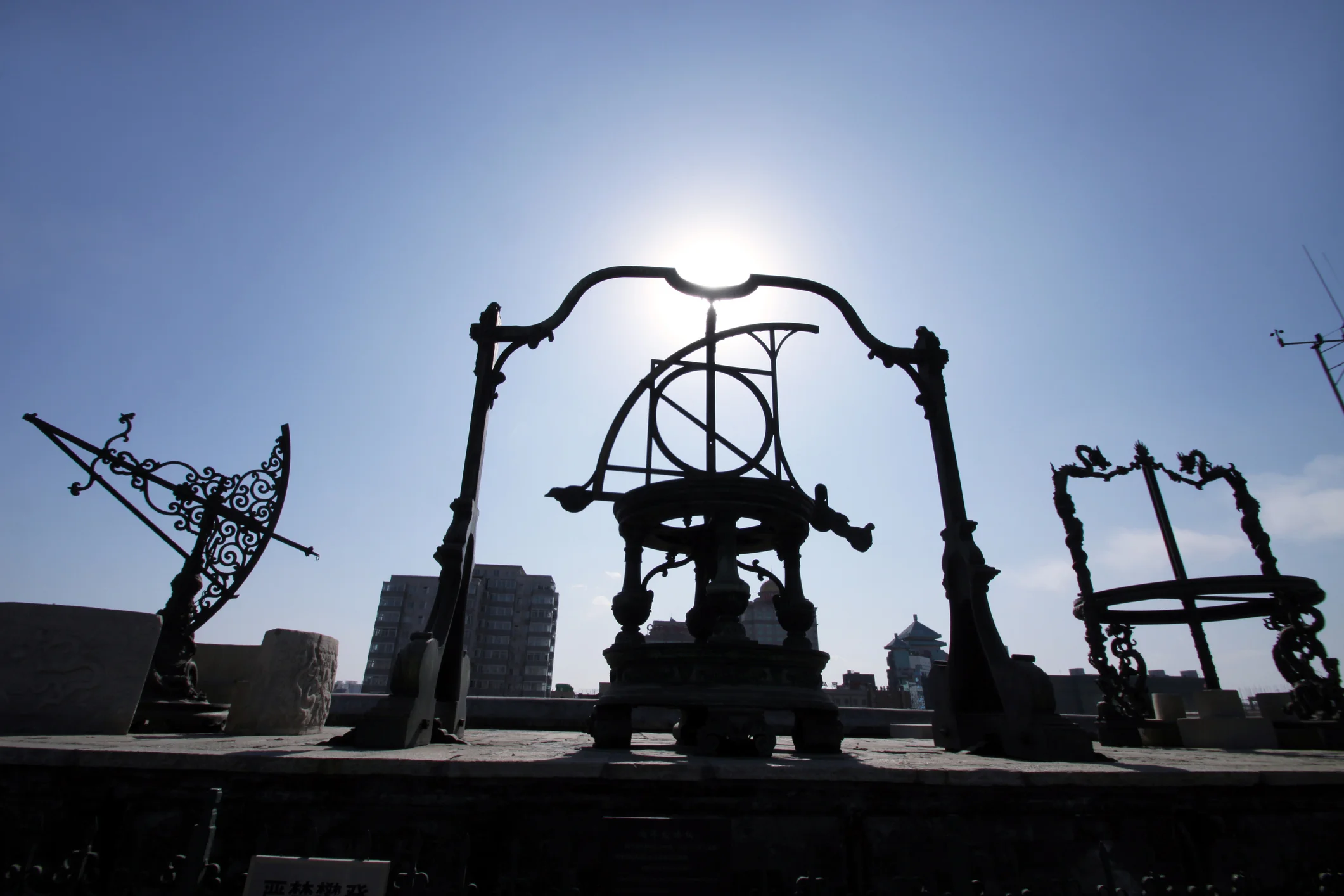Throughout human history, the measurement of time has been one of our most essential pursuits. Long before digital watches and atomic clocks, ancient civilizations developed ingenious methods to track the sun’s movement and water’s flow, creating instruments that connected humanity to the rhythms of nature.
These early timekeeping devices weren’t just practical tools—they were masterpieces of observation, mathematics, and engineering. From the towering obelisks of Egypt to the elaborate water clocks of China, these innovations reveal the sophisticated understanding our ancestors possessed about astronomy, physics, and the passage of time itself.
🌅 The Ancient Art of Shadow Casting: Understanding Sundials
Sundials represent humanity’s first widespread method of telling time with reasonable accuracy. These elegant instruments work on a beautifully simple principle: as the sun moves across the sky, a shadow cast by a vertical object moves predictably across a marked surface. This relationship between celestial movement and earthly shadow became the foundation for organized daily life in ancient societies.
The earliest known sundial dates back to ancient Egypt around 1500 BCE, though simpler shadow-casting methods likely existed much earlier. Egyptian obelisks, those massive stone monuments that punctuated the landscape of ancient cities, served dual purposes as both religious symbols and functional timepieces. The shadows they cast throughout the day allowed priests and officials to organize religious ceremonies and coordinate civic activities.
The Mechanics Behind Solar Timekeeping
A proper sundial consists of two essential components: the gnomon (the shadow-casting element) and the dial face (the marked surface where shadows fall). The gnomon must be precisely aligned with Earth’s axis, pointing toward the celestial pole. This alignment ensures that the shadow moves at a consistent rate throughout the year, despite seasonal variations in the sun’s path.
The dial face features hour lines carefully calculated based on the sundial’s geographic location. Because Earth’s rotation creates a 15-degree movement per hour, these lines radiate outward from the gnomon’s base. However, the spacing isn’t uniform—mathematical corrections account for the sundial’s latitude and the equation of time, which addresses slight variations in Earth’s orbital speed.
Regional Variations and Cultural Adaptations
Different civilizations developed distinct sundial designs suited to their needs and understanding. Greek and Roman sundials often featured hemispherical bowls with gnomons positioned at the center, creating shadows that traced curves across the inner surface. These designs compensated for seasonal variations more effectively than flat horizontal sundials.
Islamic astronomers elevated sundial design to extraordinary levels of sophistication during the medieval period. They created portable sundials for travelers, vertical sundials for mounting on mosque walls to determine prayer times, and even cylindrical sundials that could be adjusted for different latitudes. These innovations demonstrated advanced mathematical knowledge and practical engineering skill.
💧 The Flow of Time: Water Clocks and Hydraulic Innovation
While sundials dominated daytime timekeeping, they possessed an obvious limitation—they couldn’t function at night or during cloudy weather. This challenge inspired the development of water clocks, or clepsydrae, which measured time through the regulated flow of water. These devices represented a revolutionary shift from celestial observation to mechanical time measurement.
The earliest water clocks appeared in ancient Egypt around 1500 BCE, roughly contemporary with the first sophisticated sundials. Simple outflow clepsydrae consisted of stone or ceramic vessels with small holes near the bottom. As water dripped out at a steady rate, markings on the interior wall indicated elapsed time. Priests used these devices to time nocturnal religious rituals and to ensure fair water distribution for irrigation purposes.
Engineering Complexity in Ancient Hydraulics
Chinese civilization brought water clock technology to unprecedented heights of complexity. By the Tang Dynasty (618-907 CE), Chinese engineers had developed massive astronomical clocks that combined water power with mechanical gearing systems. These elaborate devices didn’t just tell time—they tracked celestial movements, indicated seasonal changes, and automated figurines that emerged to announce hours.
The most remarkable Chinese water clock was the Cosmic Engine, constructed by Su Song in 1088 CE. This tower stood over 30 feet tall and incorporated an escapement mechanism—a device that controlled the flow of water in measured intervals, effectively creating a feedback system. This innovation predated similar mechanisms in European mechanical clocks by centuries and represented one of the most sophisticated machines of the medieval world.
Greek and Roman Hydraulic Advances
Greek engineers contributed significantly to water clock refinement. Rather than simple outflow designs, they developed inflow clepsydrae where water entered a vessel at a controlled rate, lifting a float connected to an indicator mechanism. This approach allowed for more consistent accuracy because the water pressure—and therefore flow rate—remained relatively constant regardless of the water level.
The Tower of the Winds in Athens, constructed around 50 BCE, housed one of antiquity’s most impressive water clocks. This octagonal marble structure featured external sundials on its eight faces and an internal water-powered mechanism that tracked hours throughout day and night. The integration of multiple timekeeping methods in a single monumental structure exemplified the importance Romans placed on temporal precision.
⏰ Shadow Instruments Beyond Sundials: Specialized Time Markers
While sundials became the most recognizable shadow-based timekeepers, ancient civilizations developed numerous other shadow instruments for specialized purposes. These devices demonstrate the sophisticated understanding of geometry and astronomy that existed thousands of years ago.
Merkhet: Egypt’s Astronomical Precision Tool
The merkhet, used by ancient Egyptian astronomers as early as 600 BCE, consisted of a bar with a plumb line and a sighting tool. Astronomers used pairs of merkhets aligned with Polaris to establish true north-south lines. By observing when stars crossed these reference lines, they could determine nighttime hours with remarkable precision. This technique, called transit timing, became foundational for astronomical observation worldwide.
Egyptian priests used merkhets not only for timekeeping but also for aligning temples and pyramids with celestial coordinates. The precision achieved with these simple instruments—essentially ancient theodolites—allowed for architectural alignments accurate to fractions of a degree. This accuracy demonstrates that ancient engineers possessed systematic methodologies for astronomical observation and mathematical calculation.
Gnomons and the Study of Solstices
Simple vertical posts called gnomons served purposes beyond hourly timekeeping. Ancient astronomers in China, India, and Greece used gnomons to track seasonal changes by measuring the length of noon shadows throughout the year. The shortest shadow occurred at summer solstice, the longest at winter solstice, providing crucial information for agricultural planning and calendar maintenance.
The Chinese gnomon tradition dates back at least to the Zhou Dynasty (1046-256 BCE). Astronomers erected tall gnomons—sometimes exceeding 40 feet in height—to minimize measurement errors. By carefully tracking shadow lengths, they calculated the tropical year’s length with impressive accuracy, essential knowledge for maintaining the lunisolar calendar that governed agricultural and religious life.
🏛️ Cultural Significance and Daily Life Applications
These timekeeping innovations profoundly influenced how ancient societies organized daily activities, religious observances, and civic responsibilities. Time measurement wasn’t merely a technical achievement—it shaped social structures, economic systems, and philosophical understanding of existence itself.
Religious and Ceremonial Timekeeping
Most ancient civilizations intertwined timekeeping with religious practice. Egyptian priests used water clocks to determine the proper moments for temple rituals, ensuring offerings occurred at astrologically significant times. Islamic cultures developed increasingly accurate timekeeping methods specifically to calculate the five daily prayer times, which vary based on solar position and geographic location.
Buddhist monasteries in ancient India and China used water clocks and shadow instruments to structure meditation sessions and monastic schedules. The regulated flow of water became a metaphor for mindfulness and impermanence, connecting practical timekeeping with spiritual contemplation.
Economic and Social Organization
As civilizations grew more complex, accurate timekeeping became essential for economic coordination. Greek and Roman cities used public sundials in marketplaces and forums to schedule business hours, court sessions, and public assemblies. The ability to agree upon specific times enabled contracts, appointments, and coordinated activities that urban life required.
Ancient water distribution systems relied heavily on clepsydrae to ensure fair allocation. In regions where water scarcity created competition, time-based water rights prevented disputes. Farmers would receive irrigation water for specific durations measured by standardized water clocks, creating an equitable system administered by water commissioners.
📐 Mathematical and Scientific Foundations
The development of these timekeeping instruments both required and stimulated advances in mathematics, astronomy, and engineering. Ancient scientists couldn’t simply build these devices through trial and error—they needed theoretical understanding of geometric principles, trigonometry, and celestial mechanics.
Geometric Principles in Sundial Construction
Creating an accurate sundial requires understanding spherical geometry and its projection onto flat surfaces. Ancient mathematicians recognized that hour angles on sundials aren’t evenly spaced except on equatorial dials. They developed trigonometric methods to calculate proper hour line positions for various dial types and latitudes.
Greek mathematician Apollonius of Perga (262-190 BCE) studied conic sections partly to understand sundial geometry. The curves traced by shadows on different dial types correspond to conic sections—ellipses, parabolas, and hyperbolas—connecting timekeeping with pure mathematical theory.
Astronomical Observations and Calendar Systems
Water clocks and shadow instruments enabled the systematic astronomical observations that led to accurate calendar systems. Chinese astronomers used gnomons to determine solstice dates, which anchored their calendar calculations. Greek astronomers used sophisticated sundials to track the sun’s annual path through the zodiac, refining their understanding of the tropical year’s length.
These observations revealed that Earth’s motion isn’t perfectly uniform. The equation of time—the discrepancy between sundial time and mean solar time—results from Earth’s elliptical orbit and axial tilt. Ancient astronomers detected these variations through careful comparison of water clock measurements (which run at constant rates) with sundial observations (which reflect actual solar position).
🔄 Legacy and Continued Relevance
Though modern technology has superseded these ancient timekeepers in practical applications, their legacy persists in unexpected ways. The fundamental principles they embody remain relevant to contemporary science, education, and even smartphone applications.
Educational Value in Modern Context
Sundials and water clocks offer exceptional educational tools for teaching astronomy, geometry, and physics. Building a functioning sundial requires understanding latitude, Earth’s rotation, and the relationship between celestial and terrestrial coordinate systems. These hands-on projects make abstract concepts tangible, connecting students with the same observational methods ancient astronomers employed.
Many schools and science centers maintain working sundials and reconstructed water clocks as interactive exhibits. These installations demonstrate that sophisticated science doesn’t require advanced technology—careful observation and mathematical thinking can unlock natural patterns that govern our universe.
Artistic and Symbolic Dimensions
Beyond their functional purposes, these instruments possess aesthetic and philosophical significance. Garden sundials remain popular decorative elements, appreciated for their elegance and their reminder of nature’s rhythms. The sundial motto tradition—Latin inscriptions about time’s passage—created a unique literary genre blending poetry, philosophy, and practical instruction.
Water clocks have inspired artists and designers who appreciate their combination of form, function, and natural process. Contemporary sculptors sometimes create fountain installations that incorporate clepsydra principles, connecting modern audiences with ancient hydraulic engineering while creating meditative spaces that invite reflection on time’s passage.
🌍 Global Perspectives on Time Measurement
While this article has focused primarily on Mediterranean, Middle Eastern, and East Asian timekeeping traditions, diverse cultures worldwide developed unique approaches to measuring and conceptualizing time. Indigenous Australian cultures used shadow observations combined with seasonal ecological markers. Mesoamerican civilizations created elaborate solar observatories that functioned as massive calendrical instruments.
These varied approaches remind us that timekeeping is fundamentally cultural—different societies prioritized different temporal scales and rhythms based on their environmental contexts, economic activities, and philosophical worldviews. Agricultural societies needed seasonal calendars; maritime cultures required daily and hourly precision for navigation; religious communities sought alignment with cosmic cycles.
⚡ From Ancient Mechanisms to Digital Precision
The evolutionary path from sundials and water clocks to atomic timekeepers represents one of technology’s most remarkable continuities. Each innovation built upon previous understanding while addressing specific limitations. Mechanical clocks emerged from water clock escapement mechanisms. Pendulum clocks refined mechanical regulation. Quartz oscillators provided electronic precision. Atomic clocks now measure time by quantum transitions.
Yet this progression doesn’t diminish the ingenuity of ancient timekeepers. These early instruments solved genuinely difficult problems with limited resources, establishing principles that remain valid. The shadow patterns sundials exploit continue governing solar energy collection. The constant-flow principles of water clocks inform modern fluid dynamics. The astronomical observations these instruments enabled laid groundwork for physics itself.
🎯 Rediscovering Temporal Connection in Digital Age
In our era of ubiquitous digital timekeeping, ancient instruments offer something contemporary devices cannot—direct connection between time measurement and natural phenomena. Checking a sundial requires looking at the sky, acknowledging solar movement, and positioning oneself within cosmic patterns. This embodied, observational approach to time contrasts sharply with glancing at glowing digits divorced from any visible mechanism.
Some enthusiasts have created smartphone applications that simulate ancient timekeeping instruments, allowing users to visualize sundial shadows for their current location or explore how water clocks functioned. These digital recreations introduce new audiences to historical technologies while demonstrating that understanding time requires understanding Earth’s place in the solar system.
The enduring fascination with sundials, water clocks, and shadow instruments reflects more than antiquarian interest. These devices represent human ingenuity at its most elemental—observing natural patterns, discerning underlying principles, and creating tools that transform observation into practical knowledge. They remind us that science begins with careful attention to the world around us and that sophisticated understanding doesn’t always require sophisticated equipment.
As we navigate increasingly complex technological landscapes, these ancient innovations offer perspective on what constitutes genuine advancement. The best tools elegantly solve real problems while deepening our connection to fundamental realities. By this measure, a well-designed sundial remains as impressive today as when first conceived thousands of years ago—a timeless innovation indeed.
Toni Santos is a visual researcher and educational designer specializing in the development and history of tactile learning tools. Through a hands-on and sensory-focused lens, Toni investigates how physical objects and textures can enhance understanding, memory, and creativity while exploring the intersections of ancient temporal systems, ritualized time practices, and cultural perceptions of chronology. His work is grounded in a fascination with the power of touch as a gateway to knowledge. From embossed maps and textured alphabets to handcrafted manipulatives and sensory kits, Toni uncovers the subtle ways tactile tools shape cognitive development and learning experiences, while engaging with ancestral calendars and forgotten systems, chrono-rituals and time portals, cultural time perception and myth, and devices and tools of time. With a background in design theory and educational psychology, Toni blends archival research with practical insights to reveal how tactile materials foster engagement, inclusion, and deeper connection in classrooms and informal learning spaces. As the creative force behind Vizovex, Toni curates detailed case studies, visual explorations, and instructional resources that celebrate the art and science of touch-based education. His work is a tribute to: The transformative role of tactile tools in learning The intersection of sensory experience, cognition, and temporal wisdom The craft and innovation behind educational objects and time devices Whether you’re an educator, designer, or lifelong learner, Toni invites you to explore the rich textures of knowledge—one touch, one tool, one discovery at a time.




